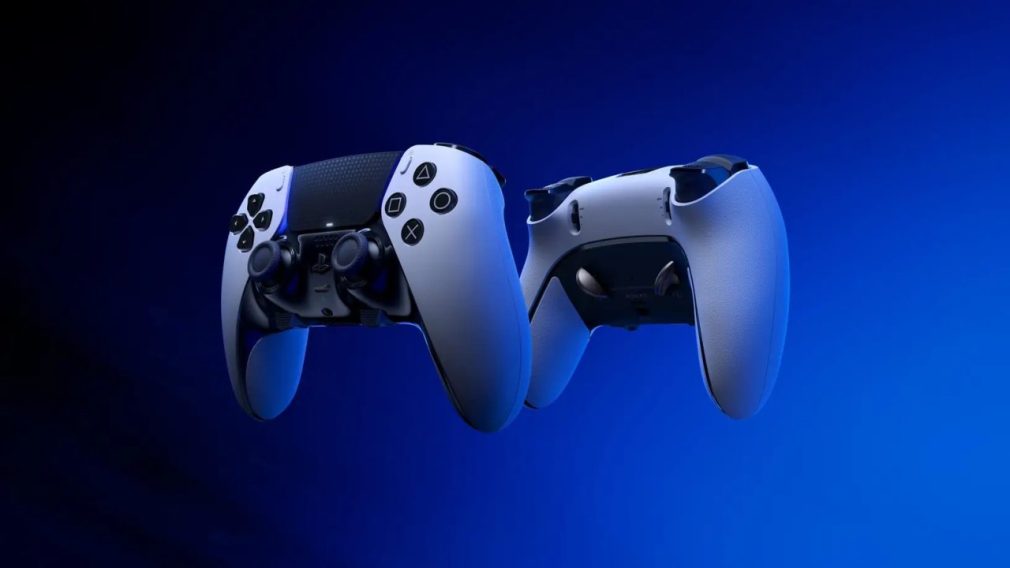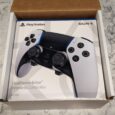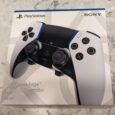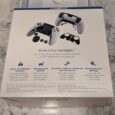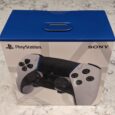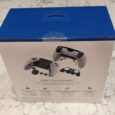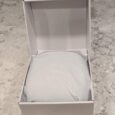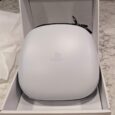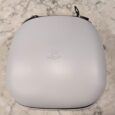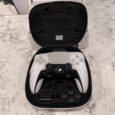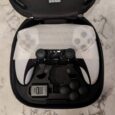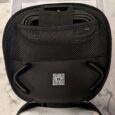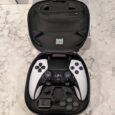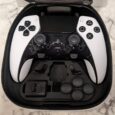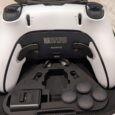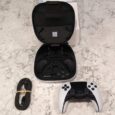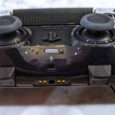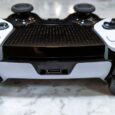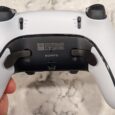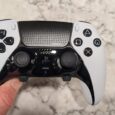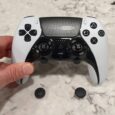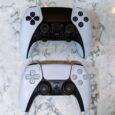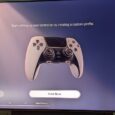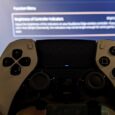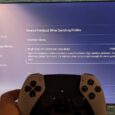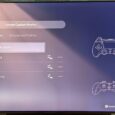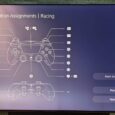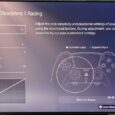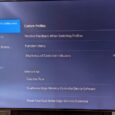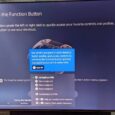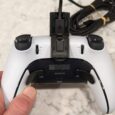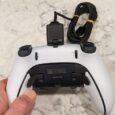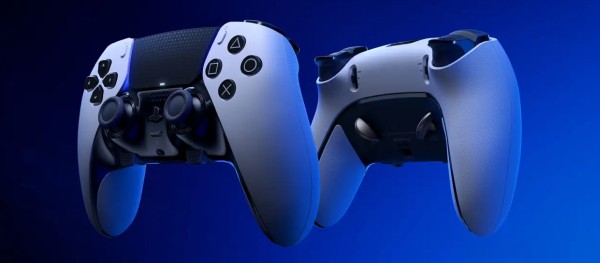 Me and Sony’s PlayStation controllers go way, way back, and I’ve had a bit of a preference for them since the Dual Analog wired controller was released for the original PlayStation console back in 1997. Before that, the fantastic Sega Genesis 6-button fighting pad and the second generation Sega Saturn controller were my personal favorites, though they were well suited for a different type of gaming experience. But since the invention and popularity of modern 3D titles nothing has quite lived up to the well-balanced symmetrical dual analog stick and split D-pad PlayStation controller styles for me.
Me and Sony’s PlayStation controllers go way, way back, and I’ve had a bit of a preference for them since the Dual Analog wired controller was released for the original PlayStation console back in 1997. Before that, the fantastic Sega Genesis 6-button fighting pad and the second generation Sega Saturn controller were my personal favorites, though they were well suited for a different type of gaming experience. But since the invention and popularity of modern 3D titles nothing has quite lived up to the well-balanced symmetrical dual analog stick and split D-pad PlayStation controller styles for me.
The PlayStation 5’s DualSense Wireless Controller has been my favorite stock out-of-the-box console controller by a fairly comfortable margin — building on the PS4’s DualShock 4 and the PS3’s DualShock 3 before it, and so on. Sony has been successful at iteratively improving and evolving their controller devices, well except maybe for that rumble-less PS3 SIXAXIS launch controller which I assume they would rather forget about.
So with a solid controller design to start with and a growing market out there for pro-style console controllers, it was kind of inevitable that Sony would work with their hardware design and development group and produce their own premium, high performance piece of controller hardware. And thus the $200 DualSense Edge Wireless Controller was born!
DualSense Edge Wireless Controller Packaging:
Once unpacked the whole DualSense Edge Wireless Controller kit does immediately look like a high quality accessory, despite the flimsy 100% recyclable box that’s wrapped around it. The controller itself is packaged in a nicely padded, white colored semi-hard shell carrying/storage case with a zipper, complete with various replacement sticks and rear button components along with a braided custom USB-C cable and locking adapter nestled neatly within. Check out the photos below for a visual.
DualSense Edge Storage/Carrying Case:
The original DualSense I feel has had the best build quality out of the big 3 console manufacturers (my launch controllers are still in flawless working condition), and also one of the highest price tags thanks to the numerous bells, whistles and features. Is there an appetite for an even more well-made, customizable version at around 2.5x the price of a stock PS5 controller? We definitely think so, thanks in part for the ability to easily customize/swap out key components and setup custom profiles which can be created and triggered on the fly.
Honestly the biggest selling point for me was the additional, configurable rear button interfaces which very much change up how certain games can be played. There have been a number of premium/pro-style controllers with built-in rear button functionality — Sony didn’t invent the concept (the Xbox Elite has 4 rear lever buttons in fact), though having that option officially supported as a first party PlayStation controller and built right into the console’s system software does make a difference.
Up close with the DualSense Edge:
The overall form factor for the DualSense Edge isn’t actually dramatically different than that of the standard DualSense, which is a good thing for those who already prefer the shape, size, balance and layout of the original. The Edge has a bit more heft to it thanks to the change in some of the materials and extra physical components to provide for the additional button interfaces and user customizations. The D-pad and face buttons are made of the same materials, though color swapped from clear white to clear black. The touchpad is also black, though imprinted with a pattern of PlayStation symbols (there’s numerous little touches like that). The pieces that comprise the controller shell are shaped somewhat differently as seen in comparison photos below, and the matte black sections are glossy black on the Edge. The face buttons are a little noisier (clickier?) compared to the regular DualSense with ‘O’ circle being most noticeable in my particular case, though the motion and responsiveness feel good with all of the buttons. One thing is for sure, the original DualSense has always been a pretty looking controller and the DualSense Edge is downright gorgeous (in my opinion at least).
DualSense Edge | DualSense comparison shots:
In general, in terms of materials, components and fitment, the DualSense Edge Wireless Controller feels like it’s built to last — and honestly it better given the price point — but only time will tell. One way that Sony has futureproofed the device is by giving end users the ability to unlock and pop off the front panel and drop in fresh analog stick modules which are sold separately for $19.99.
Out of the box the standard analog stick caps can be removed and swapped with the included sets of low or high dome caps which provide a different feel to the sticks as you’d expect in terms of texture and movement. I still prefer the standard flat top design over the curved, retro feeling caps but it’s nice to have options. The same goes for the rear button slots which can accommodate either the metal levers or half dome back buttons — both also included with the DualSense Edge. As mentioned earlier, these rear button options are programmable and can be mapped to other controller buttons which opens up several possibilities for button customization and controller layouts.
DualSense Edge Wireless Controller Profile/Mapping Configuration:
For at least one of my custom profiles (there are 4 slots in total), I setup the rear buttons to behave as additional L3/R3 stick buttons which works especially well when needing to hold down an action (which was previously mapped to a stick click) while also needing to performing other actions. Once that profile was set up and the rear levers popped on I jumped into Horizon: Forbidden West and found that the gameplay experience immediately benefited from having sprint and focus actions no longer tied to clicking and/or holding L3/R3 — which can be finicky under pressure. One of the other profiles I made sure to set up for driving/racing and particularly Gran Turismo 7, and of course the lever buttons work beautifully as more intuitive paddle style shifters.
The configuration wizard and profile options are pretty extensive and I’m sure users will find some creative custom profiles and mappings. The DualSense Edge has a pair of dedicated Fn (function) buttons right below the analog stick modules that can be used for a number of… functions such as changing or customizing profiles on the fly, adjusting headset volumes or audio balance and whatnot.
The other rear button option is the shorter half dome components which definitely work better for twitchier actions such as when you’d rather perform a quick, responsive click rather than a hold. What’s even better is that you can use one of each, depending on user preference for a specific game. In terms of the shoulder buttons, they are about the same shape as on the original DualSense, though there’s limiter switches on the back to lock the amount of travel for R2/L2 actions. Don’t need a squishy full travel trigger? Then just lock it in position for better performance. Of course thanks to the customizations built into the PS5 system software you can also fine tune not only the analog trigger ranges but also the analog stick sensitivity.
For those super serious players who are sensitive to wireless controller latency and prefer to play wired direct to the PS5, Sony saw fit to include a long, high quality USB-C cable that slots into a locking adapter which can be attached to the back of the DualSense Edge.
I’m not a competitive gamer by any means but I play enough console games these days to appreciate a flexible and well-built controller with more than a few quality of life enhancements. If you’re in the market for a high performance or premium PlayStation wireless controller option check out the DualSense Edge Wireless Controller at the PlayStation Direct storefront right here.
Sony provided us with a DualSense Edge Wireless Controller for editorial purposes.

